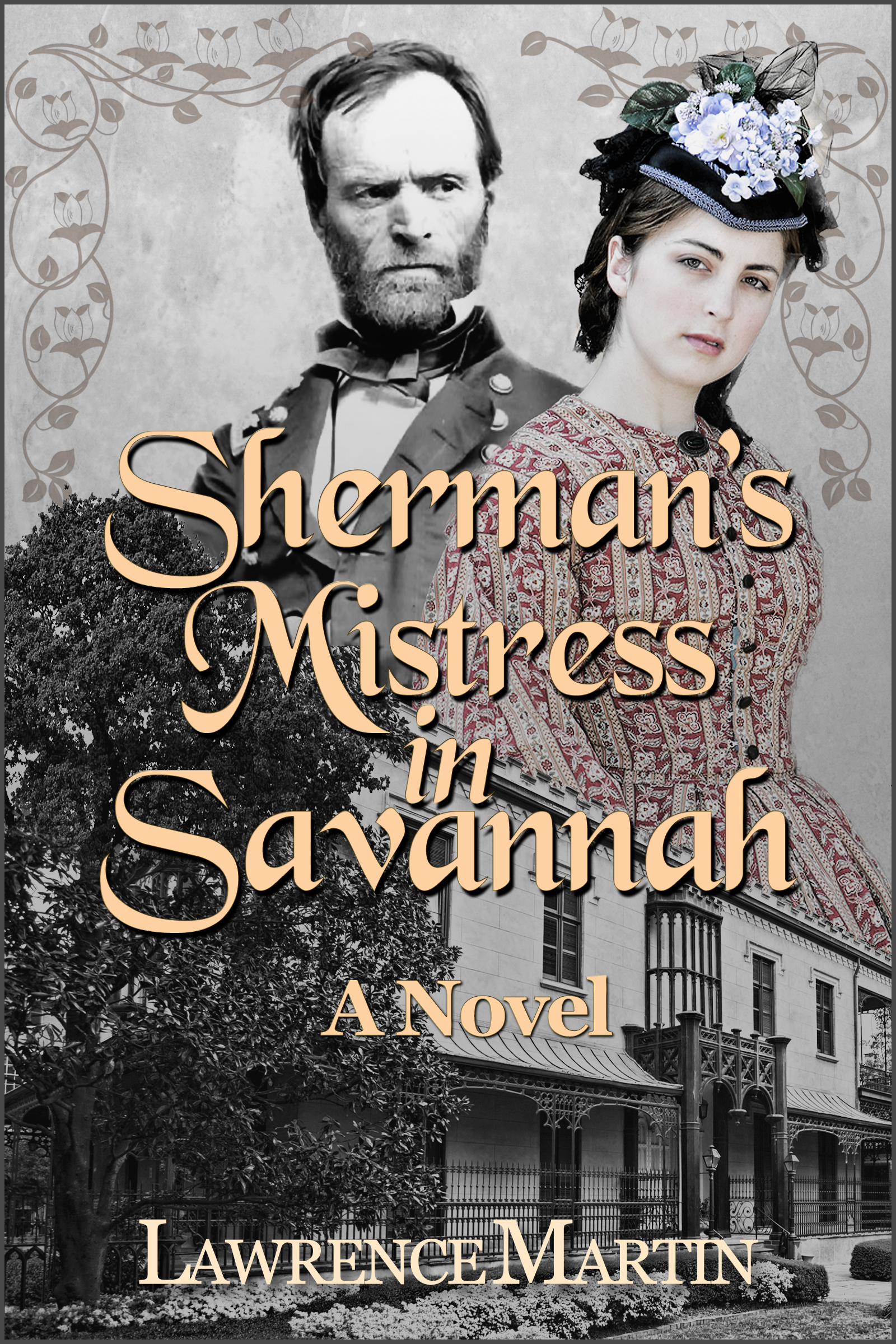INTRODUCTION
Though Union troops took over Fort Pulaski in April 1862, Savannah remained well defended until Sherman captured it by land in December 1864, following the fall of Ft. McAllister December 13, 1864. During all of 1863 there was widespread belief that the south could either win the war or force the north into a favorable truce. At the same time, Savannah suffered from the naval blockade, effectively closing its port and impoverishing many citizens. By the time of Atlanta's fall in September 1864, it became clear that the south would not prevail. Ft McAllister was located in Bryan County, adjacent to Savannah's Chatham County. It faced the Ogeechee River, one of two main waterways that lead from the Atlantic Ocean to Savannah (the other is the Savannah River). Sherman realized that if he took Ft. McAllister his army could be resupplied from the Atlantic (where Union ships were waiting) and lay siege to Savannah indefinitely.
1863
January 27, 1863
The ironclad
Montauk, accompanied by several other vessels (Seneca, Wissahickon, Dawn and C.P Williams), heads up the Ogeechee River for Fort McAllister. The ship takes many hits from the fort's guns, without damage. It bombards the fort for 4 hours, also without inflicting much damage.
February 1, 1863
The same flotilla as on January 27 makes yet another attack on Ft. McAllister, this time inflicting damage to the fort which is easily repaired (unlike with Ft. Pulaski in April 1862).
February 4, 1863
Ironclad CSS Savannah is launched on the Savannah River. It won't be officially turned over to the CSS Navy until June 30, 1865, and will not see any battle until December 1864, when it is assigned to protect General Hardee's army escaping from Savannah.
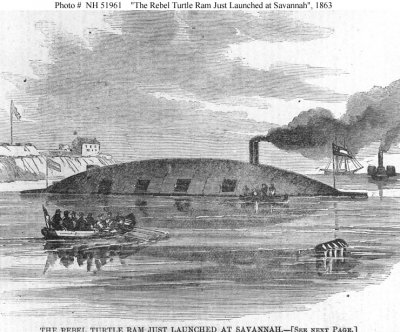
The CSS Savannah. The ship was blown up by Confederates the night of December 20, 1864, while General Hardee's army escaped into South Carolina.
February 28, 1863
The ironclad
Montauk anchors within 1200 yards of the Confederate raider "Nashville (Rattlesnake)" that had earlier run aground in the Ogeechee River near Ft. McAllister. The
Montauk opens fire with 11-inch and 15-inch guns while a sister ship shells Ft. McAllister. The Rattlesnake bursts into flames and is sunk. After the attack
Montauk hits a torpedo (mine) and is damaged. The damage is soon repaired and the ship later takes part in the April 1863 bombardment of Charleston.
March 3, 1863
Three ironclads return to bombard Fort McAllister in what will be the 7th and final attack on the fort by Union boats. After 7 hours of back and forth shelling, neither the ships nor the fort are appreciably damaged. The result convinces U.S. Admiral Samuel Du Pont that the ironclads can be used effectively in battle, and the Montauk becomes the principal ironclad in the naval attack on Charleston in April 1863. The assault on Fort McAllister also proves that earthen forts, like McAllister, are better able to withstand shelling than brick forts like Pulaski.
June 17, 1863
CSS Atlanta runs aground while targeting blockaders in Wassau Sound. She is forced to surrender by Union ships USS Nahant and USS Weehawken. At the time of capture 21 officers and 124 men are on board. From there she is brought up north and enters U.S. Navy as USS Atlanta.
June 30, 1863
Ironclad CSS Savannah (see photo above) is transferred to the Confederate Navy, under the command of Flag Officer William W. Hunter. Its armament includes two 7-inch rifled cannons and two 6.4-inch Brooks guns. It has a top speed of only 6 knots. The crew consists of 180 men.
July 8, 1863
From the diary of Josephine Clay Habersham, as quoted in
Ebb Tide, page 38.
August 1, 1863
From the diary of Josephine Clay Habersham, as quoted in
Ebb Tide, page 57.
October 31, 1863
Confederate President Jefferson Davis (photo below) visits Savannah during his train tour of southern cities. [Regarding this visit, Spencer Bidwell King Jr., the author of
Ebb Tide, writes (page 104):]
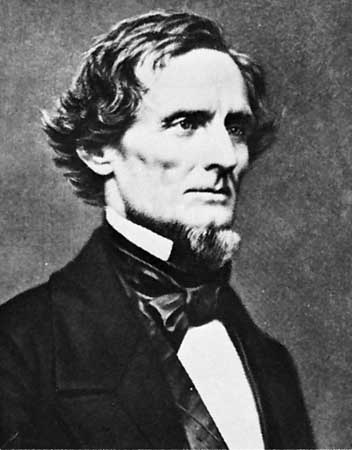
[The passage below is from the October 31, 1863 diary entry of Josephine Clay Habersham, as quoted
in Spencer King's book
Ebb Tide:]
1864
[Comment: Regarding Civil War activity, Savannah is relatively inactive for most of 1864. The city is effectively blockaded for sea trade, though the Savannah-Charleston railroad is still operating and there are many confederate troops in and around the city. In late November and through the end of December, General Sherman and his Army draw the nation's attention to the city.]
February 22, 1864
Union forces land on Whitemarsh Island along the Savannah River. Confederate attack causes them to retreat.
March 17, 1864
"St. Patrick's day came and went with little or no notice, most of the city's Irishmen in Confederate Service." (Derek Smith, Civil War Savannah)
[This is noteworthy because for years before the war, and every year since, there has been a large St. Patrick's Day parade in the city.]
June 3, 1864
Confederates mount 2 am surprise attack on the USS Water Witch, a 378-ton sidewheel gunboat anchored near Savannah in Bradley Creek. Though their leader Lieutenant Thomas P. Pelot is killed, Confederates overpower the Union crew and seize the boat. On June 19 the Water Witch
is burned so she cannot be recaptured by the Union navy.
October 23, 1864
600 Confederate prisoners are herded into Ft. Pulaski, as retaliation for the Confederates keeping Union prisoners in the line of fire in Charleston. [While some of the men are later transferred to Hilton Head, several hundred remain through a miserable winter, and many die of disease. In March 1865 survivors are shipped back to Fort Delaware, where 25 more succumb to illness. The last man of the group is not released until July 1865. The harsh conditions of imprisonment inspired one of the captives, John O. Murray, to record his experiences in the 1905 book The Immortal Six-Hundred. The name he gave the group stuck, and today they are still referred to as the Immortal 600.]
November 16, 1864
Sherman commences march of his 62000-man army southward. Only he and a few officers know the intended destination (Savannah), and during the march they make feints toward Augusta and Macon.
December 9, 1864
After his troops cross Ebenezer Creek near Savannah, Union General Jefferson C. Davis orders the pontoons to be taken up, before some 600 newly-freed blacks can cross over. This leaves them stranded on the other side, with Confederate cavalry closing in. Many blacks panic and jump into the creek, where they drown. Others are captured by Confederate cavalry.
Davis' action at Ebenezer Creek appalls some Union soldiers, one of whom writes his congressman. [The soldier's letter was leaked to the press and became a big story in northern papers. In January 1865 Secretary of War Edwin Stanton conducted an informal inquest while in Savannah. Sherman supported Davis' action and no charges were brought. Below is a current marker near the site where the troops crossed.]
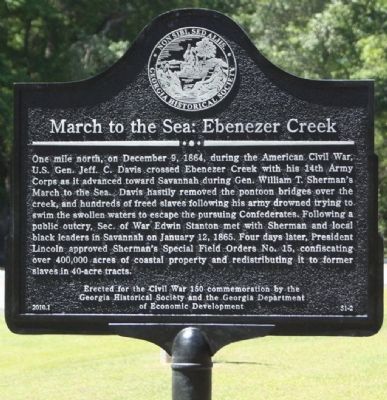
December 8-10, 1864
Over a two-day period Sherman's army reaches outskirts of Savannah, having traveled some 300 miles since mid-November. [An outline of the paths taken by the two wings of his army is shown in the map.]
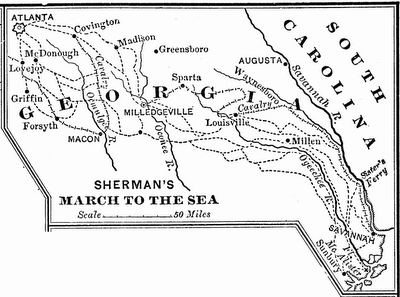
They find the city well protected by flooded rice swamps that leave only narrow causeways for foot travel. He is able to make contact with the union fleet waiting in the waters of Ossabaw Sound, but cannot receive supplies because the Ogeechee River is guarded by Fort McAllister. His next objective is to take the Fort, something Union gunboats have not been able to do since attempts began in July 1862.
 -->
-->

Google map showing location where Fort McAllister stood on the Ogeechee River, south of Savannah
December 13, 1864 (Tuesday)
Under command of Brig. Gen. William B. Hazen, troops storm Ft. McAllister, which only has about 120 Confederate troops, under the command of Maj. George A. Anderson. Commencing about 4:45 pm, the
battle is over in 15 minutes. Total estimated casualties: 92 Union, 50 Confederate. With his supply line now open to the Navy supply ships, General Sherman prepares for the siege and capture of Savannah.
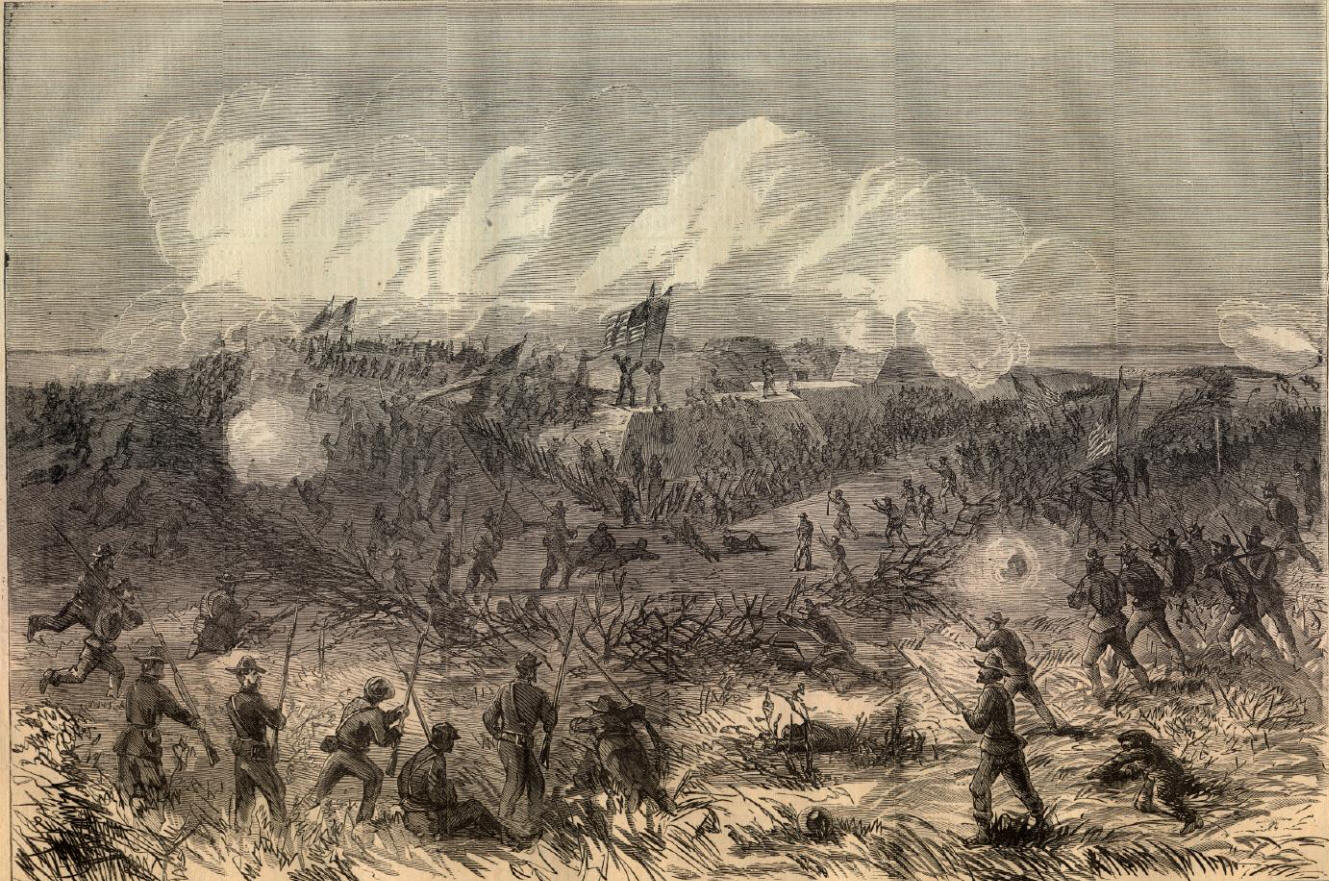
General Hazen's Division, Fifteenth Corps, Storming Fort McAllister, December 13, 1864, as published in Harper's Weekly, January 14, 1865
December 17, 1864 (Saturday)
Sherman sends following message to General Hardee, demanding surrender of the city.
Headquarters Military Division of the Mississippi,In the Field, near Savannah, Ga.,
December 17, 1864.
General William J. Hardee,Commanding Confederate Forces in Savannah:
GENERAL: You have doubtless observed from your station at Rosedew that sea-going vessels now come through Ossabaw Sound and up Ogeechee to the rear of my army, giving me abundant supplies of all kinds, and more especially heavy ordnance necessary to the reduction of Savannah. I have already received guns that can cast heavy and destructive shot as far as the heart of your city; also, I have for some days held and controlled every avenue by which the people and garrison of Savannah can be supplied, and I am therefore justified in demanding the surrender of the city of Savannah, and its dependent forts, and shall wait a reasonable time for your answer, before opening with heavy ordnance. Should you entertain the proposition, I am prepared to grant liberal terms to the inhabitants and garrison; but should I be forced to resort to assault, or the slower and surer process of starvation, I shall then feel justified in resorting to the harshest measures, and shall make little effort to restrain my army—burning to avenge the national wrong which they attach to Savannah and other large cities which have been so prominent in dragging our country into civil war. I inclose a copy of General Hood's demand for the surrender of the town of Resaca, to be used by you for what it is worth.I have the honor to be your obedient servant,
W.T. Sherman, Major-General
Headquarters Department South Carolina, Georgia, and Florida, Savannah, Georgia, December 17, 1864.
December 18, 1864 (Sunday)
General Hardee Replies to General Sherman's surrender demand.
Major-General W.T. Sherman, commanding Federal Forces near Savannah, Georgia
...Your demand for the surrender of Savannah and its dependent forts is refused.
With respect to the threats conveyed in the closing paragraphs of your letter (of what may be
expected in case your demand is not complied with), I have to say that I have hitherto conducted the military operations intrusted to my direction in strict accordance with the rules of civilized warfare, and I should deeply regret the adoption of any course by you that may force me to deviate from them in the future. I have the honor to be, very respectfully, your obedient servant,
W. J. Hardee, Lieutenant-General
Headquarters Military Division of the Missisippi, in the Field, near Savannah, Georgia, December 18, 1864- 8 p.m.
December 19, 1864 (Monday)
Mayor Richard Arnold learns that Sherman's troops are advancing on the city and that the Confedate army plans to evacuate.
Having received General Hardee's refusal to surrender, Sherman assumes he will have to invade Savannah, Preparatory to this invasion, Sherman travels by boat to Hilton Head Island, SC, to secure support from General Foster. Sherman doesn't want to split his army above and below the Savannah River. He arranges for General Foster's troops to aid the invasion from the South Carolina side of the river, mainly by blocking Hardee from escaping.
December 20, 1864 (Tuesday)
By late afternoon, plans for evacuation of all able-bodied Confederate troops are complete. General Hardee gives order for evacuation to begin in the evening, under cover of darkness. Unaware of these developments, General Sherman departs Port Royal to make his way back to Savannah. Bad weather delays his ship, and after changing to a smaller boat, Sherman finally reaches King's Point on the Ogeechee River (south of Savannah and one mile upstream from Ft. McAllister) late on December 21st. There he spends the night.
Also evacuated on this date are troops from Fort Jackson, which guarded the Savannah River just 3 miles upstream from the city. During the day the Confederates scuttle the CSS Georgia just 200 yards from the fort. Later that evening the ironclad Savannah is blown up on the Savannah River.
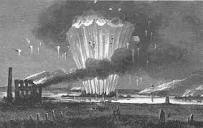
Ironclad Savannah being blown up on Savannah River (from Harper's Weekly, February 4, 1865)
December 20-21, 1864 (Tuesday night - Wednesday morning)
General Hardee begins evacuation of all able-bodied confederate troops. They march over a pontoon causeway laid over two branches of the Savannah River; the first section goes from the foot of West Broad Street to Hutchinson Island, and the second section from the island to South Carolina. An estimated 10,000 troops escape in this manner. (A contemporary drawing of the evacuation is shown below.)

"In order to deaden the sound, rice straw was thickly strewn over the pontoon bridges. By three o'clock on the morning of the 21st the rear guard of the Confederate army had crossed over to Hutchinson's island, and the evacuation was complete. Engineer troops shortly afterwards detached the flats, cutting holes in them and setting them adrift. Lieut. Col. Paul of Gen. Hardee's staff was ordered by the general, at midnight on the 20th, to take command of a small force, and, after seeing that the pontoon bridge from the foot of West Broad street to Hutchinson's island was destroyed, to collect such stragglers as he could and cross by way of Screven's ferry. This command was detailed to preserve order in the city to the latest moment." (Jones, The Siege of Savannah, page 155)
December 21, 1864 (Wednesay)
In the early morning hours, after Hardee's army has evacuated Savannah, Mayor Arnold and a group of Alderman rush to meet up with Union General John W. Geary; his troops are closest to Savannah, to plead for a peaceful surrender. Mayor Arnold reads a formal proclamation to General Geary.
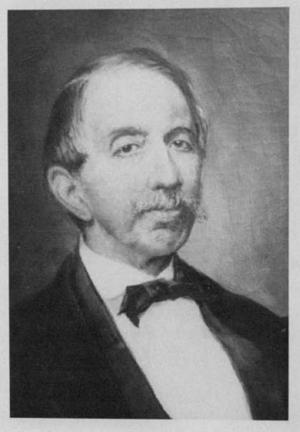
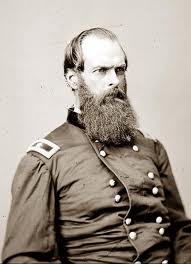
Mayor Richard Arnold General John Geary
“SIR: The city of Savannah was last night evacuated by the Confederate military and is now entirely defenseless. As chief magistrate of the city I respectfully request your protection of the lives and private property of the citizens and of our women and children. Trusting that this appeal to your generosity and humanity may favorably influence your action, I have the honor to be, your obedient servant." Richard D. Arnold, Mayor, December 21, 1864
General Geary takes the proclamation from Mayor Arnold and accepts the formal surrender of Savannah. Then, just before dawn Geary and his soldiers enter the city unopposed. They walk up West Broad Street (now Martin Luther King Blvd.) and turn right on Bay St. Geary stops at the Customs House (Bay and Bull streets) and climbs to the roof to survey the city. As illustrated in Harper's Weekly, later in the day the Union Army marches triumphantly down Bay Street, past the Customs House (columned building on the left).
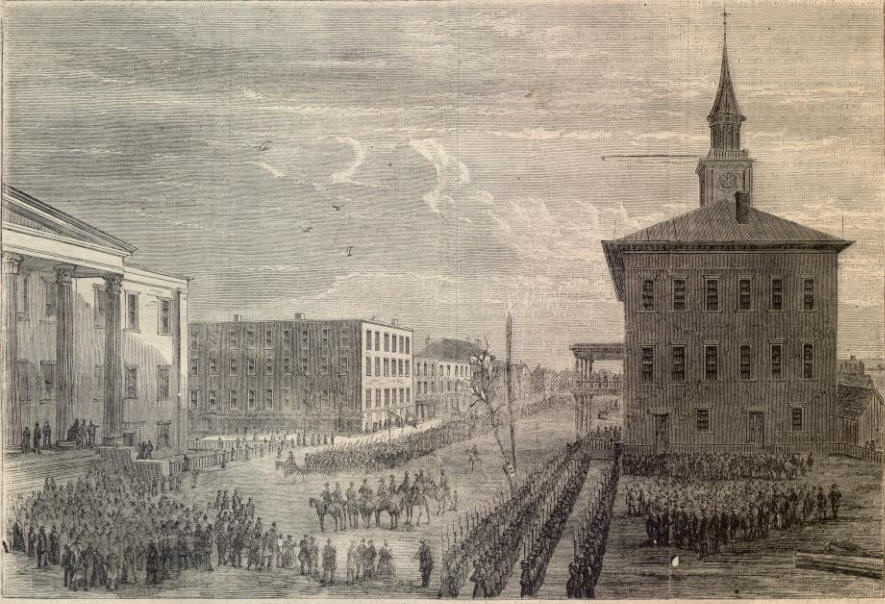
Pages from the Cornelius C. Platter Civil War Diary, December 21, 1864. (A transcription for entries of 12/21/1864 is below the diary photocopies; click on either image for enlargement. Platter's diary is of historical significance because it gives a Union Soldier's first person account of Sherman's March. Note in this entry his comment on Savannah's beauty at the time, and also about General Sherman being "out generaled" in letting General Hardee's army escape.)
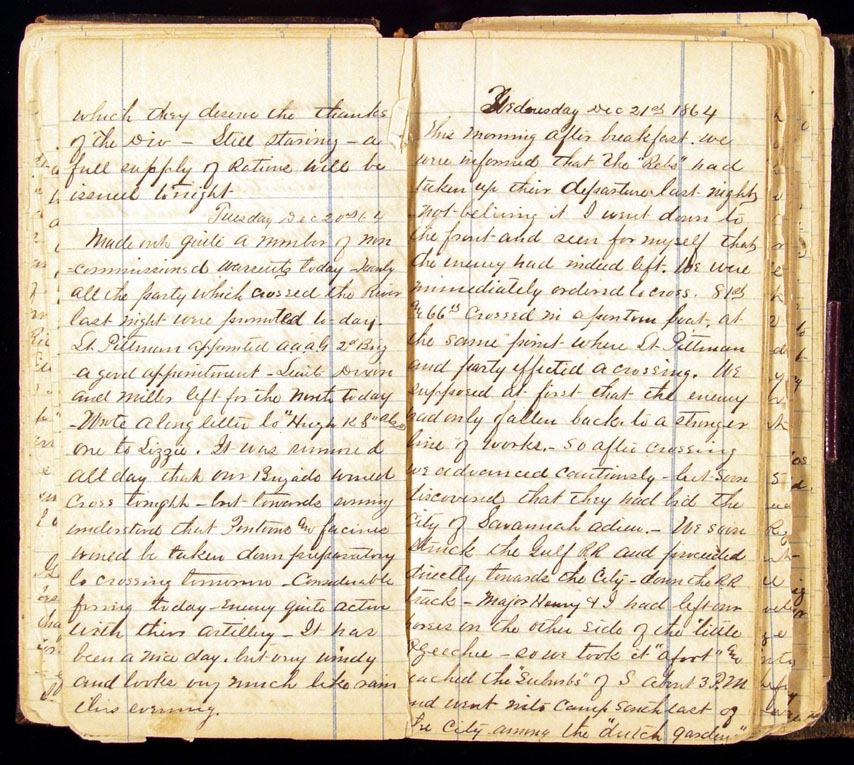
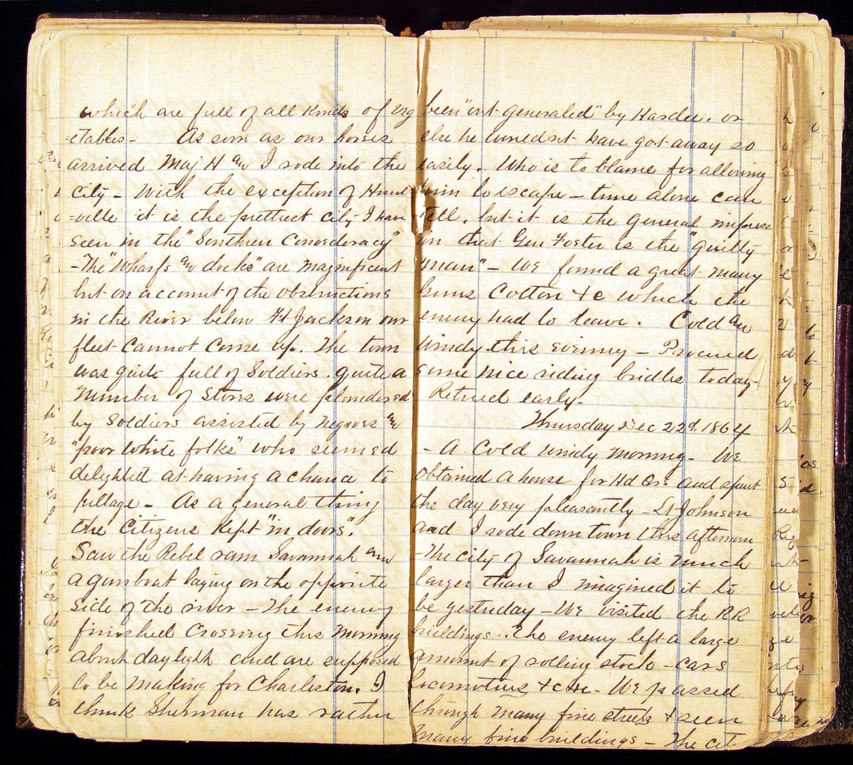
This morning after breakfast we were informed that the "Rebs" had taken up their departure last night not believing it I went down to the front and seen for myself that the enemy had indeed left. We were immediately ordered to cross. 81st and 66th crossed in a pontoon boat at the same point where Lt [Lieutenant] Pittman and party effected a crossing. We supposed at first that the enemy had only fallen back to a stronger line of works. - so after crossing we advanced cautiously - but soon discovered that they had bid the city of Savannah adieu.
-- We soon struck the Gulf RR and proceeded directly towards the City - down the RR track - Major Henry & I had left our horses on the other side of the "Little Ogeechee - so we took it "afoot" and reached the "suburbs" of S about 3 PM and went into camp southeast of the city among the "dutch gardens" Which are full of all kinds of vegetables. As soon as our horses arrived Maj [Major] H and I rode into the city -- With the exception of Huntsville it is the prettiest city I have seen in the 'Southern Confederacy" - The "Wharfs and docks" are magnificent but on account of the obstructions in the River below [illegible] Jackson our fleet cannot come up. The town was quite full of Soldiers - quite a number of stores were plundered by soldiers assisted by negros and "poor white folks" who seemed delighted at having a chance to pillage - As a general thing the Citizens kept 'in doors". Saw the Rebel [illegible] Savannah and a gun boat laying on the opposite side of the river -- The enemy finished crossing this morning about daylight and are supposed to be making for Charleston. I think Sherman has rather been "out generaled" by Hardee. or since he couldn't have gotten away so easily - Who is to blame for allowing him to escape -- time alone can tell. but it is the general [unclear: informs] us that Gen [General] Foster is the "guilty man" -- We found a great many Guns Cotton & c [et cetera] which the enemy had to leave. Cold and windy this evening -- Procured some nice riding bridles today Retired early.
End of Part 2: 1863 to December 21, 1864
For Part 1 (1861-1862) Click here
For Part 3 (December 21, 1864 - April 1865) Click here
Summary of all lp.com Civil War web sites
Return to Lakeside Press
email Lawrence Martin
Copyright © 2012-2013 Lakeside Press. Initially posted March 31, 2012. Last revision March 5, 2013.
